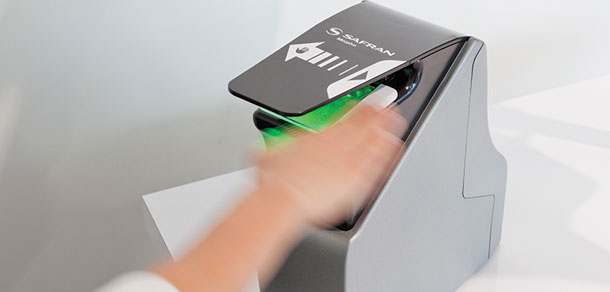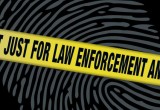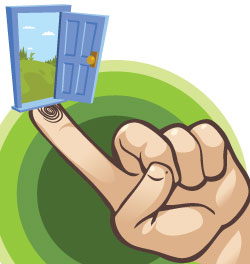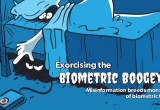Touchless fingerprints: A new approach to an old modality
11 February, 2015
category: Biometrics, Corporate, Government, Health, Library
The stalwart of biometric authentication has long been fingerprints, with implementations ranging from high-security physical access to unlocking a mobile phone. But while other biometric modalities have made public strides in recent years, the fingerprint has been quietly taken for granted as a secure authenticator.
In reality, fingerprints have been steadily evolving, and the latest advancements are giving rise to a new touchless fingerprint.
Touchless fingerprints sensor from MorphoTrak, known as Finger on the Fly, is taking a new approach to fingerprint enrollment and verification.
“The impetus for this rapid touchless technology came from the federal government,” says Rob Horton, director of marketing and communications at MorphoTrak. “We were asked to develop a technology that was multi-modal – not just touchless fingerprint but also iris at a distance and facial recognition – that could be deployed at a moment’s notice and could enable a person to quickly walk through and be screened against multiple databases.”
Fingerprints were the logical starting point. “We began showing touchless fingerprint at federal trade shows and there was significant interest from other markets particularly in settings where very rapid throughput is a priority,” says Horton.
Capturing minutiae on the fly
In the realm of fingerprints, every detail is critical no matter how small. In fact, the miniscule details – the minutiae – lie at the heart of a successful authentication.
Minutiae is a term that refers to the changes in ridge flow or the lines in a fingerprint. There are two primary forms of minutiae that a fingerprint sensor identifies: ridge bifurcation, where a ridge will fork into two distinct paths, and a ridge ending, where the ridge terminates. Image contrast is key, and the better contrast, the better the likelihood is that the sensor will detect and identify the minutiae of a fingerprint.
Cameras and motion sensors in the Finger on the Fly scanner are triggered when a hand moves across the read area. The device takes multiple photographs of the fingers as the hand passes through the scanner. The on-board computing does the rest, as the device selects the best images to conduct the authentication.
As Horton explains, in its initial developments, the system would wait for the entire hand to pass through the scanner before segmenting and identifying the minutiae from each of the four fingers.
“Now, we start processing the minutiae of the first finger as soon as it passes over the scanner,” he explains. “This enables near-instantaneous response, we’ve gone from achieving a match in under a second to getting a match in just milliseconds.”
But there’s more to touchless than just speed.
“With Finger on the Fly we’re able to capture each fingerprint from multiple viewpoints,” says Gary Jones, director of biometric access and time solutions at MorphoTrak. “This allows us to essentially capture a 3D image of the print, which mirrors the manual process of rolling a fingerprint over a scanner.”
This means more information for a better match. “By capturing multiple angles of each fingerprint, we are able to increase the number of possible minutiae that we can later detect during a scan,” explains Jones. “The more minutiae you have, the more flexibility you provide the user when they come back to authenticate.”
“Through multiple studies, NIST has found that the accuracy of fingerprint biometrics increases with the number of fingers used,” explains Horton.
“More fingers makes spoofing efforts more difficult,” Jones adds. “You would have to acquire as many as eight or ten of a person’s fingerprints to successfully spoof the system.”
The security threshold that the system administrator establishes can authenticate a user based on any of their initially enrolled fingerprints, even if one is damaged or is lost. You could enroll all fingers and choose to accept only a single finger for authentication or choose to authenticate as many as ten.




